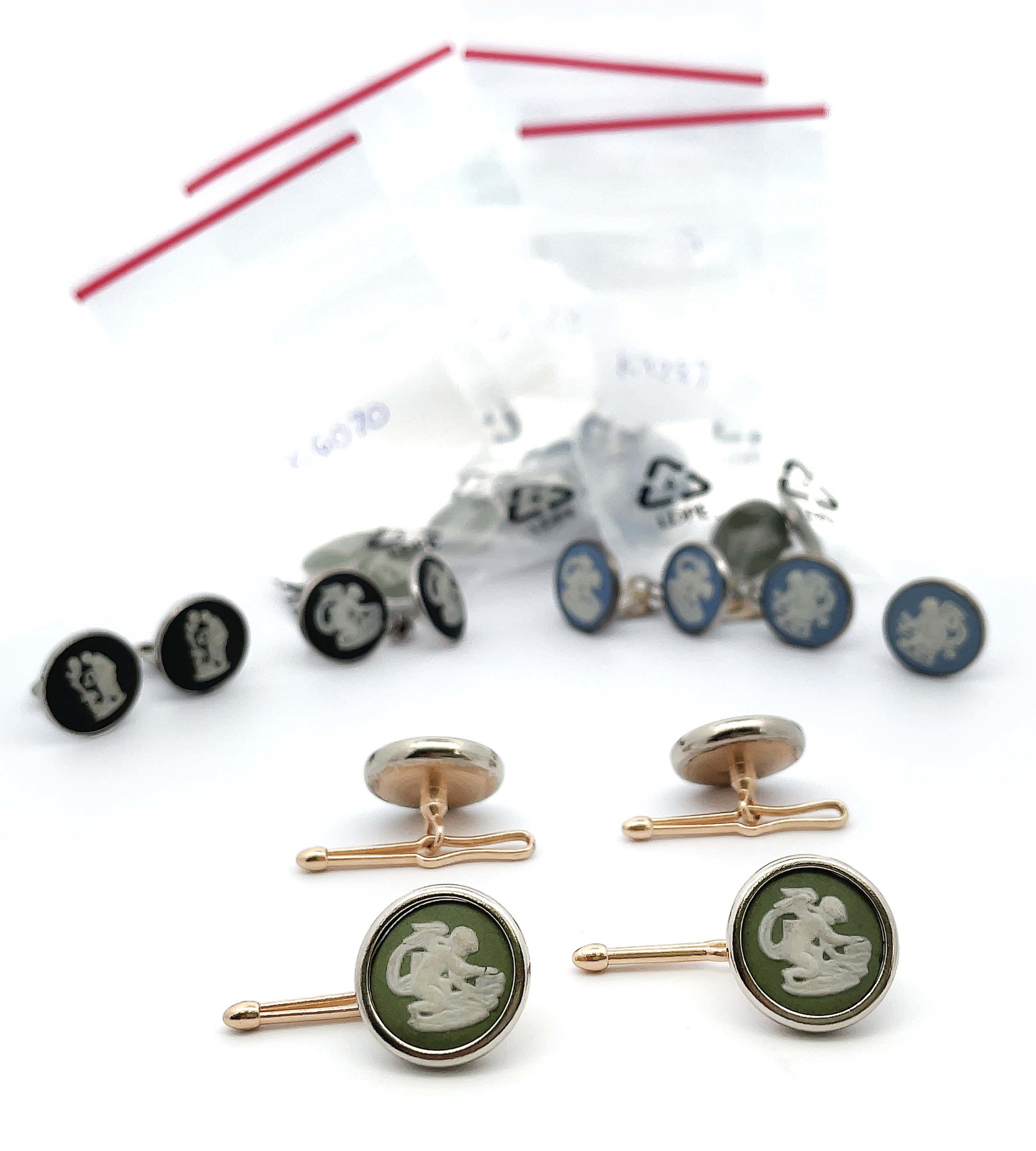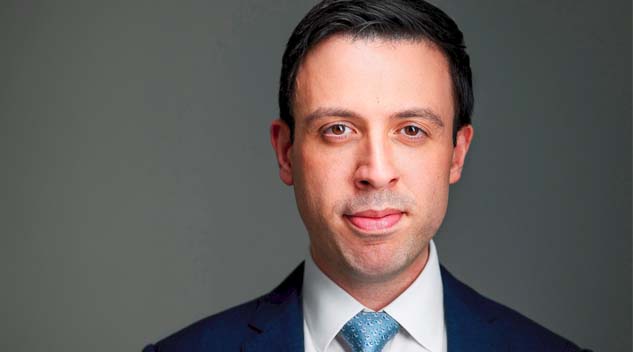#Kev #Massoyan #Antiques #Arts #Weekly

Peter Hurley photo.
Kev Massoyan is the CFO of a Manhattan-based private equity firm and has spent most of his career working in large financial institutions in New York. With his husband, architect Steven W. Spandle, he collects early American furniture and decorative arts. Kev’s interest in design and collecting is rooted in the family business he grew up around; his father is a goldsmith and diamond setter, his sister is a gemologist. Together with Kev’s mother, the family has operated their business — Massoyan Jewelers in northern New Jersey — for three decades. While Kev’s primary passion and day job is finance, he has found creative ways to stay connected to those family roots. Antiques and The Arts Weekly had the opportunity to speak with this money-guy-by-day, jeweler-by-night, for a show-and-tell of what he’s been working on.
Where did we first discuss doing this Q&A?
We were at the Philadelphia antiques show opening night, this past April and I mentioned how excited I was about a project, creating bespoke tuxedo stud sets. It was a bit of a random thing to bring up, but I was so immersed in planning and designing these sets at the time that it became this reoccurring non sequitur in most of my non-finance conversations. I was also very excited to be creating these pieces through the family store; I had the infrastructure at my fingertips to make this idea a reality.
What inspired you to start this project with your family store?
I was at a black-tie event and I thought about how uniform tuxedos look. Stud sets used to be a big deal and they are a great way to personalize, and express yourself, when wearing a tuxedo. Cufflinks are not as highly visible while stud sets are on full display. The shirt is essentially a white canvas for artwork. I decided I would create a prototype set for myself and see how it turned out.
Around the same time, Jasperware was fresh on my mind because the family store had just come across some vintage Wedgwood jewelry. There doesn’t appear to be a lot of Jasperware stud sets out there, but there are many sets of earrings on the vintage market. So, I started buying up sets of the various designs with the intent of resetting them as stud sets in 14K gold.
Tell us about the process of creating this set?
Bezel-setting the Jasperware medallions is relatively straight forward. The trickier part was designing an effective backset mechanism to hold the studs securely in the buttonholes. We looked at many examples (single spoke, double hinge, single hinge and others) and weighed the pros and cons of each. Many have experienced the issue of a stud falling out of a buttonhole during an event, so a stable mechanism is very important. Losing a single stud can be very upsetting, especially if it is a special set.
I had a CAD drawing made of the design (which is the first step of producing a custom piece). While waiting for the backset mechanism, I had a simple bezel setting produced in 14k white gold. Once the components were in hand, our jeweler (we have a team of craftspeople we work with for various tasks) assembled the pieces together. I made the first set using green Jasperware.

Tuxedo studs created by Kev Massoyan, with green Jasperware medallions bezel-set in 14K white gold, with sliding spoke backset in 14K yellow gold.
When you make additional sets, will your family sell them in the New Jersey store?
They’ll primarily be featured on the store’s YouTube channel. The store has brought in a talented jeweler who is filming his work on the bench and the business has amassed more than 300,000 subscribers in less than a year. It’s extraordinary.
And now that the prototype of the tuxedo sets is complete, the completion of the next set will be filmed so that the jeweler can show how the components are made and put together.
I’m looking to make 10 sets total in Jasperware. I have 20 pairs of vintage Wedgwood medallions in different colors, so the target is to make nine more sets. And, thereafter, I’ll move on to a completely different material; I already have in mind what that will be.
Jewelry making isn’t your day job. How do you reconcile or balance out the two?
You know, some people go fly fishing; I’m making bespoke tuxedo studs. I’m a CFO in the private equity world and finance is my primary passion, but jewelry making is a great way for me to stay connected with my family and have a creative outlet.
It makes sense if you think about who I’m around all the time: my free time is spent surrounded by designers and artists. My husband, Steven Spandle, is an architect. We are always visiting house museums, antiques shows, and spending time with interior designers, museum curators and people in the design industry. Having a fun project like making bespoke stud sets fits right in.

In the foreground are the first completed tuxedo stud sets created by Kev Massoyan, with green Jasperware medallions bezel-set in 14K white gold and sliding spoke backset in 14K yellow gold. In the background are the original blue and black Jasperware medallions that will be used in the next tuxedo stud sets.
Would you make anything other than tuxedo studs?
No, and I get that question all the time. I know it’s a bit unusual to be obsessed with just tuxedo studs. And believe me, I’m very aware that there are other things going on in the world.
But I think this is important, and there’s a particular need for it. I want to not only create but I want to put this out in the milieu: to help elevate and add something of my own to our shared social and visual experiences.
Did growing up in a small business give you any benefits to your career in finance?
Yes, watching my father and mother run a strong business through multiple market cycles was a masterclass. Through the years, I have had a front row seat on how to run a business and I carry a lot of those lessons with me in my day job.
And the ground was shifting all the time, in terms of the macroenvironment — especially when you’re dealing with raw materials and commodities. For example, you can imagine in the 2000s how industry players up and down the chain adjusted strategy when there were large rallies in the price of gold. I learned how money worked early on, while doing so in the context of artwork and creativity.
Was the business always in New Jersey, in the same location?
The retail shop has always been in Old Tappan, N.J. But earlier on, my father had another company with his two brothers, on Fifth Avenue in Midtown Manhattan, focused on high quality large production run jewelry, much of it sold in department stores. During what I call the “peak production” years in the 1980s, my uncles and my father had a 35-person shop at 581 Fifth Avenue.
What is your father’s area of expertise?
He’s both a goldsmith and a diamond setter; almost always, you’re either one or the other, but he is both. He learned one from his older brother (a master goldsmith) and one from his younger brother (a master diamond setter). They all started in the industry very early in life, they’re at the top of their field and are responsible for teaching and training many others over the years.

Kev’s father (right, age 18) teaching his uncle (left, age 15) goldsmithing in 1967.
What was it like to being around so many craftspeople as a child?
It was incredible and constantly buzzing — literally — especially in the years when my father and uncles were working together. Everything in the workshop was being crafted by hand and everyone in the shop had their particular expertise. The goldsmiths were in their group, the diamond setters were in another group and so on. There were even people tasked with sorting through and categorizing parcels of precious stones.
In the 1980s, we were not using computerized CAD drawings so there was a room filled with casts and molds for the various designs. It was a serious place with a lot of talent; some of the artisans that came out of that workshop went on to hold notable positions with some of the more familiar names like Tiffany and Harry Winston.
The shop also felt like you were somewhere important. I remember looking outside my father’s fourth floor office window and seeing the American flags up the street at Rockefeller Center. There was so much new and exciting energy abound. My Armenian parents both immigrated to the United States in the 1970s and met one another here in the States; I was very aware at a young age that we started from scratch, that this success was newfound. We’re all very thankful and talk about those days with humility.
You pursued a career in finance when so many of your family members were in the jewelry making industry. Did they ever try to pull you in?
There was no intense pressure to join the business, but I vividly remember a time early on when they tried to test my ability and interest-level.
I was around 12 years old and they threw me in the deep end and tried to assess if I could pavé-set a diamond, to see if I had the natural intuition to grasp it right away. As a proxy for gold, they flattened a piece of scrap metal in a vice. They had me drill a hole, place the stone in the center and try to push the surrounding metal above the edges of the stone, just as you would do with gold. It was a disaster. They quickly decided that I was not a natural when it came to diamond setting. Finance emerged as my main passion. And, I think it all turned out just fine.
So what’s next and what are you looking forward to?
Steven and I have a number of events between now and the end of the year and I am excited about spending time with the talented people he works with. I’m looking forward to the antiques shows that are coming up, namely in San Francisco, then Wilmington, Del., and then the Winter Show at the Park Avenue Armory.
But I’m mostly excited about my career and continuing to grow as a finance professional, in a market that’s constantly changing. I’ve been doing this for 20 years and there is never a dull moment. And I feel very fortunate that I can work in my industry here in New York, and at the same time be in such close proximity to the art and design world. Both sides of my brain feel like they’re in high gear.
Aren’t you exhausted?
No way, I’m ready for more.
—Madelia Hickman Ring




